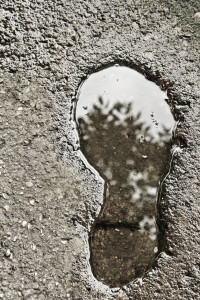‘Water productivity’ and ‘water footprints’ have become mainstream. How can they really help?

While terms like ‘water productivity’, ‘water footprint’ and ‘virtual water’ have infused scholarly literature and the world of infographics, some scientists question whether they actually help water management and policies. However, according to a journal article by the International Water Management Institute (IWMI), increasing water productivity, the basis of the slogan ‘more crop per drop’, can indeed help water management and policy, and practically boost incomes and bring environmental benefits. This is possible only if water productivity and water footprint are used properly in the context of water use and availability.
Too often, the big numbers mask the nuanced social, environmental and political factors of a specific region and largely ignore the impact on livelihoods. The authors propose methods that improve water productivity to enhance social benefits. They also point out the need for developing water production functions for specific crops and locations.
What exactly are water productivity and water footprint?
Water productivity is a ratio of the amount/value of a product to the volume of water required to produce it.
Water footprint is simply the reciprocal of water productivity. Instead of ‘more crop per drop’, it promotes ‘less drop per crop’. It has become a popular concept for ‘virtual water’, a term which emerged in the 1990s to evaluate the amount of water needed to produce internationally traded crops. Some researchers suggest water-poor countries should import goods with large water footprints from water-rich countries, reserving its water resources to produce food or other goods with small water footprints.
Increasing water productivity and reducing water footprint support the concept that water should be used efficiently to boost yields and/or incomes. It implies that when water is scarce and/or has a high opportunity cost, a farmer should switch from growing a high water-intensive agriculture production to a less water-intensive production. Improving water productivity is not an entirely new concept, but it has gained considerable notice as global concerns about water scarcity have risen. This especially holds true in the developing world.
What’s the problem?
According to the journal article, proponents of water productivity and water footprint often disregard the impact on livelihoods and environment, and do not account for input costs such as energy, labor and capital. They also overlook opportunity costs of water (i.e., the benefits foregone of alternative uses of water). In an area with abundant water resources, the opportunity cost of using water is low. Additionally, there is little value in promoting increasing water productivity or reducing water footprint in areas with undeveloped markets or a vital need for food security.
For example, water productivity is high in Punjab, a dry, north-western state in India. But growing water-intensive cops such as rice is not sustainable because this area receives only 500 mm of annual rainfall. Water productivity is a good tool to identify alternative crops or products to manage consumptive water use at a sustainable level, without any drastic impact on income.
On the other hand, water productivity of rice is low (or water footprint is high) in the eastern region of India during the wet season. But water has a very low opportunity cost during this period, where rainfall surpasses 1100 mm. And yields are low due to a lack of economic development. Rice is also an important food staple in this eastern region. In the east, other factors should outweigh the water management decisions rather than the water productivity or water footprint.
If water productivity and water footprint are used in blanket-approaches to policy, certain regions highly suitable for growing a water-intense crop could lose out.
The way forward
Over the last two decades, water productivity and water footprint have helped bring water scarcity issues to the forefront, both in the public and political arenas. According to the journal article, these concepts should not be disregarded, but water managers and policy makers do need to realize the limitations of water productivity and water footprint. If the local context is addressed and water measurements are used rationally, water productivity and water footprint could potentially support local and regional water interventions, especially in arid and semi-arid regions.
“We must ensure the recent debates on water productivity and water footprint do not mislead or confuse policy makers and practitioners. These concepts can offer helpful contributions to water management decisions if we understand their limitations and opportunities,” said Upali Amarasinghe, Senior Researcher at the International Water Management Institute (IWMI) Regional Office in Hyderabad, India.
[hr top=”yes”/]
Amarasinghe, U.; Smakhtin, V. 2014 Water productivity and water footprint: misguided concepts or useful tools in water management and policy? Water International. Vol. 39, Iss. 7.
This work was funded by the CGIAR Research Program on Water Land and Ecosystems

